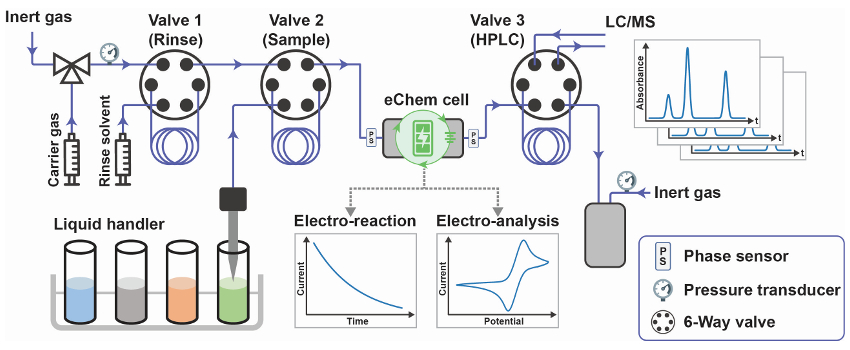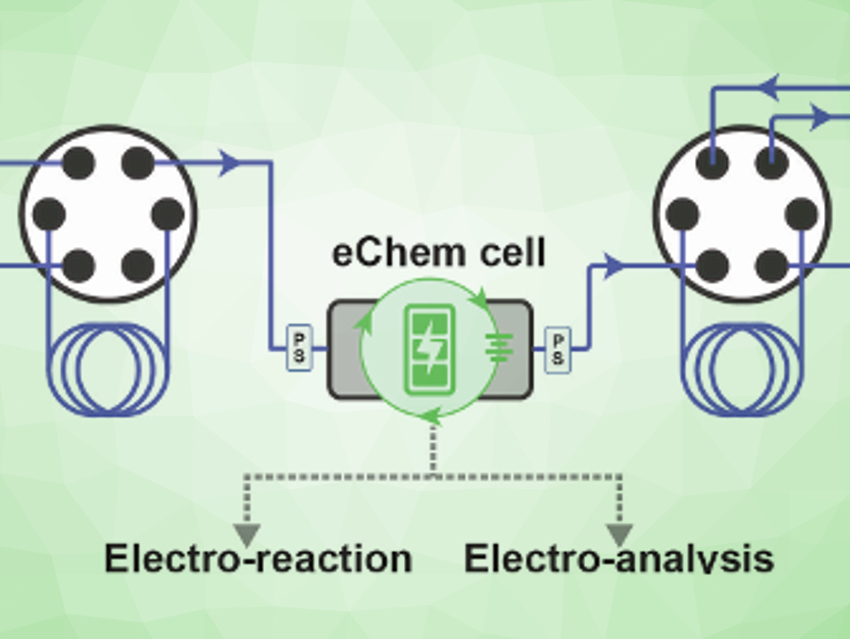Electrochemical organic syntheses can be useful, e.g., for the development of sustainable reactions and for the discovery of new reactivities. However, compared with conventional syntheses, additional parameters such as the electrolysis current need to be optimized in electroorganic reactions. Currently, electrochemical approaches rely on many manual operations, including reagent preparation, assembling the electrochemical cells, electroanalysis, workup, and product analysis. This can make the optimization of electroorganic reactions challenging and time-consuming.
Klavs F. Jensen and colleagues, Massachusetts Institute of Technology (MIT), Cambridge, USA, have developed an automated microfluidic single-droplet screening and analysis platform for electroorganic synthesis. This platform (schematically pictured below) could accelerate the discovery of new electroorganic processes. It was constructed using microfluidic technology and automated using LabVIEW software.

During the automated experiments, a computer-controlled liquid handler withdraws liquid from vials to prepare a microfluidic droplet and injects it into the sample loop. A syringe filled with pressurized nitrogen gas moves the droplet to a central electrochemical flow cell for either electrochemical reaction or electrochemical analysis. Then, the droplet is introduced into a high-performance liquid chromatography (HPLC) sample loop to analyze the reaction outcome. The location of the droplets within the microfluidic system is tracked by phase sensors. After each experiment, the system is cleaned multiple times with solvent droplets to avoid cross-contamination.
Only 15 μL of a sample are required for a single electrochemical reaction screening or analysis experiment. This small sample volume allows optimizations and screenings with minimal reagent consumption. The streamlined, automated experimental cycle enables fast operation after an initial manual reagent preparation. According to the researchers, their modular approach could be adapted for different electroorganic chemistry applications.
- A multifunctional microfluidic platform for high-throughput experimentation of electroorganic chemistry,
Yiming Mo, Girish Rughoobur, Anirudh Manoj K Nambiar, Kara Zhang, Klavs F. Jensen,
Angew. Chem. Int. Ed. 2020.
https://doi.org/10.1002/anie.202009819




